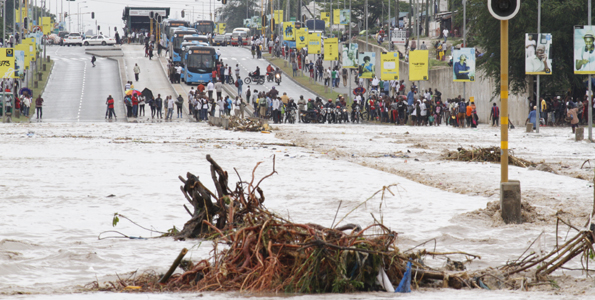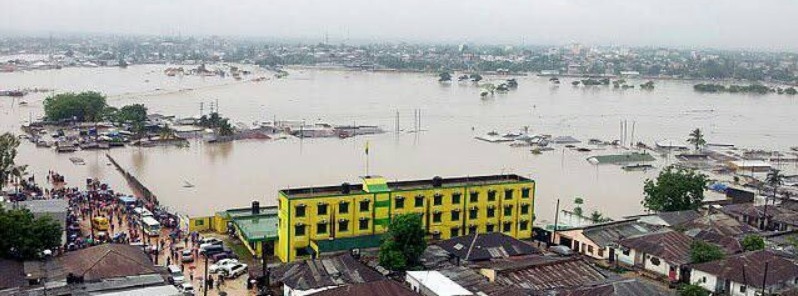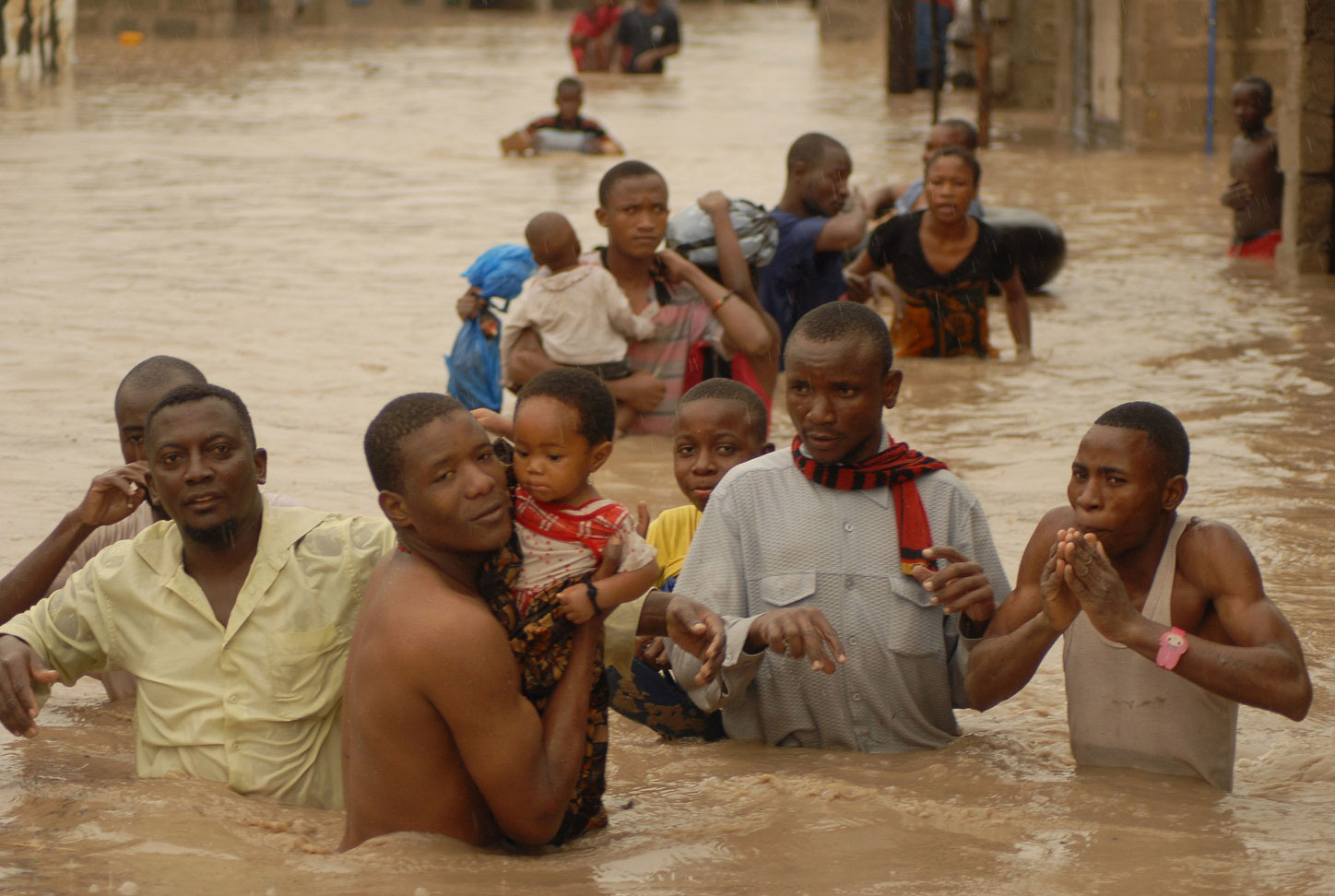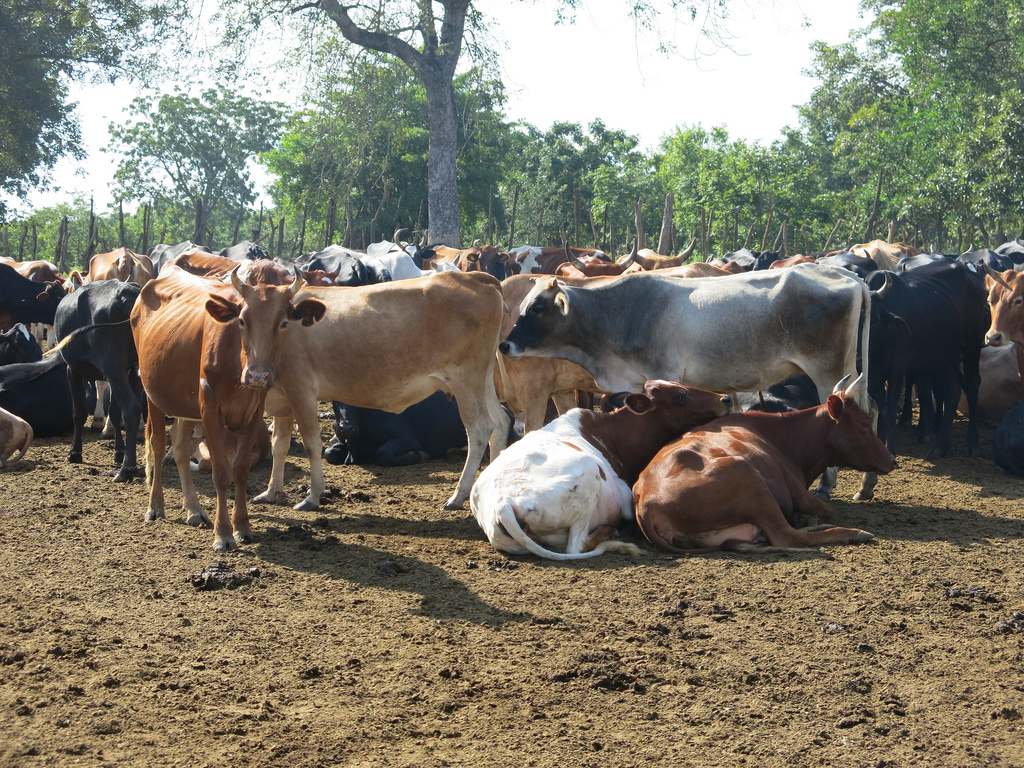-
Asks for international help footing the staggering ‘bill’.
-
What little the country can do without international community is already being done. The Tanzania Government has allowed the International Livestock Research Institute (ILRI) to conduct research in the country with purpose of data collection to help the Government formulate better policies, strategies and action for adaptation and mitigation of climate change issues.

A major bridge is submerged in floods in Tanzania’s business capital, Dar es Salaam, cutting off the link to the city center in one climate change related downpour (Internet file Photo).
By Jaston Binala.
Tanzania plans to spend an estimated USD 60 billion on climate change adaptation and mitigation by 2030, according to a document submitted to the United Nations Convention on Climate Change.
Only a portion of this budget will be met by whatever little the country can afford while the rest of the bill will need help from the international community according to the document seen by TZ Business News.
Amid prolonged droughts, cyclones and floods in Africa and elsewhere around the globe, many nations– including Tanzania– have become signatory to the Paris Climate Change Agreement which relates to the UN Convention of Climate Change and which requires nations to show how they plan to tackle climate change.
All nations signatory to the Paris Climate Change Agreement are required to submit to the UN the so called ‘Intended Nationally Determined Contributions (INDCs)’, which constitute declared intentions to reduce greenhouse gas emissions; intentions which must be followed by the actual implementation of the intentions to reduce the emissions.
Tanzania has submitted its INDCs, and they have come with a cost.
“The total amount of financial resources needed for implementation of the identified adaptation contributions [in Tanzania] is about USD 500 million to 1 billion per annum, and a total of USD 60 billion for mitigation contributions [by 2030],” Tanzania’s Intended Nationally Determined Contributions (INDCs) document states.
“Therefore, implementation of the identified INDCs will strongly depend on how the international community meets its commitments in terms of financial and technological support,” the document reads.

Houses are submerged in floods in Dar es Salaam, Tanzania’s business capital on the Indian Ocean coast in 2018; a suspected effect of climate change.
The problem of climate change, once a theoretical academic subject, is now an urgent problem requiring action across the globe. Tanzania is already experiencing adverse impacts of climate change, the document says.
“Current climate variability and change resulting in extreme weather events already lead to major economic costs in Tanzania. Every annual event has economic costs in excess of 1% of GDP, and occurs frequently, reducing long-term growth and affecting millions of people and their livelihoods. The net economic costs of addressing climate change impacts could be equivalent to a further 1 to 2% of GDP per year by 2030,” the document reads .
“Climate change impacts are affecting coastal zones, public health, energy supply and demand, infrastructure, water resources, agricultural production and availability of ecosystem goods and services. Potentially, there will be high economic costs across these sectors.
“Current climate vulnerability and future climate change adverse impacts are significant to curtail Tanzania from achieving key economic growth, development and poverty reduction targets for reaching middle income developing country status,” the document warns.
Tanzania intends to become a middle income developing country by the year 2025.
Armed with advance knowledge agriculture and livestock sectors are major contributors to climate change, Tanzania wants to up-scale the level of improvement of agricultural land and water management, to increasing yields through climate smart agriculture, to protect smallholder farmers against climate related shocks, including through crop insurance, according to the INDCs document.
The country also intends to strengthen capacity in Agricultural research institutions to enable them conduct basic and applied research.
Published data from FAO in Tanzania, indicate 26% of total Green House Gas emissions in the country come from the agriculture sector of which 70% are from cattle–either from enteric fermentation at 41%, or manure left on pasture land 29% (FAOStats, 2010’).
Tanzania intends to promote climate change resilient traditional and modern knowledge on sustainable pasture and range management systems. The country also intends to enhance development of livestock infrastructure and services, promote livelihood diversification of livestock keepers as well as promoting development of livestock insurance strategies.
What little the country can do in the agriculture and livestock sectors has already started being done. The Tanzania Government has permitted the International Livestock Research Institute (ILRI) of Nairobi, Kenya, to conduct research in the country with the purpose of data collection to help the Government formulate better policies, strategies and action for adaptation and mitigation of climate change issues particularly in the livestock sector.
The research was conducted during the last two years, TZ Business News is informed. ILRI plans to hold a data validation and consultative workshop in Dar es Salaam with the nation’s livestock stakeholders in June, 2019 after which findings will be published for use.
The country has told the UN “Tanzania will reduce greenhouse gas emissions economy-wide between 10-20% by 2030 relative to the BAU scenario of 138 – 153 Million tones of carbon dioxide equivalent (MtCO2e)- gross emissions, depending on the baseline efficiency improvements, consistent with its sustainable development agenda. The emissions reduction is subject to review after the first Biennial Update Report (BUR).”
“Tanzania will embark on a climate resilient development pathway,” the document states.
“In doing so the adaptation contributions will reduce climate related disasters from 70% to 50%, and significantly reduce the impacts of spatial and temporal variability of declining rainfall, frequent droughts and floods which have long term implications to all productive sectors and ecosystems, particularly the agricultural sector.
“Access to clean and safe water will be increased from 60% to 75% and, based on a conservative and a worst-case scenario of 50cm and 1m sea-level rise, the contributions will verifiably reduce the impacts of sea level rise to the island and coastal communities, infrastructure and ecosystems.”
Activities slated to achieve the objectives at the estimated cost of USD 60 billion by 2030 include promoting low emission transport systems through deployment of Mass Rapid Transport Systems and investments in air, rail, marine and road infrastructures, promotion of clean technologies for power generation; and diverse renewable sources such as geothermal, wind, solar and renewable biomass.
Other measures include application of modern and practical way of managing waste including the enhanced use of engineered/sanitary landfills, promotion of waste to energy programmes, strengthening national wide tree planting programmes and initiatives.
Tanzania has also promised to strengthen protection and conservation of natural forests to maintain ecological integrity and continued benefiting from service provisions of the sector, enhancement and conservation of forest carbon stocks, promoting integrated water resources development and management practices, investment in protection and conservation of water catchments including flood control and rainwater harvesting structures.
The country also intends to promoting waste water reuse and recycling technologies;, development and exploitation of groundwater resources, improving monitoring and early warning systems of both sea level rise impacts and extreme weather events for building adaptive capacity, as well as enhancing programme for management of saltwater inundation and intrusion.
Plans also include enhancing capacity in early warning systems across sectors, improved research and systematic observations, improved climate change institutional capacity and coordination as well as awareness creation in addressing climate change.
Now whether the USD 60 billion will be available for Tanzania’s climate change bill by 2030 is a matter of waiting to see what happens.





